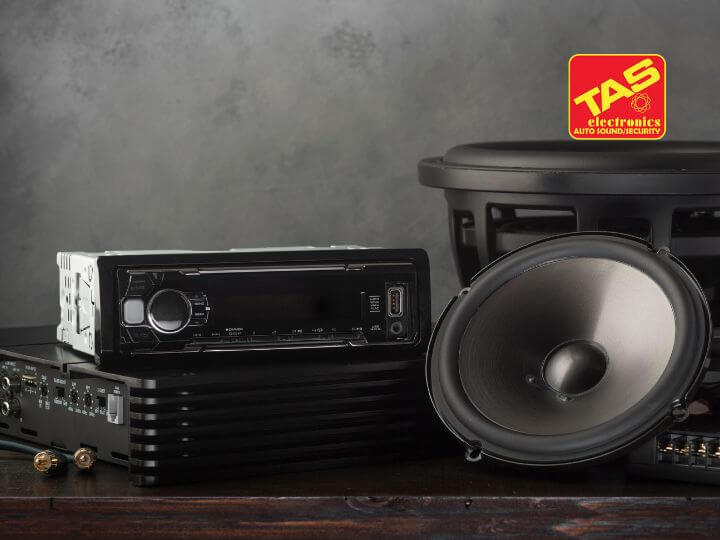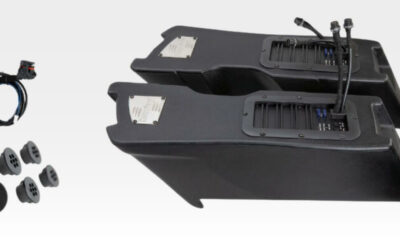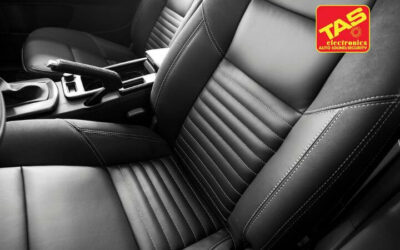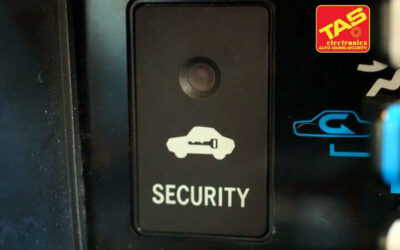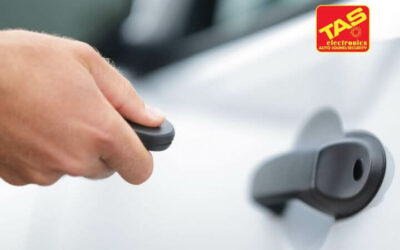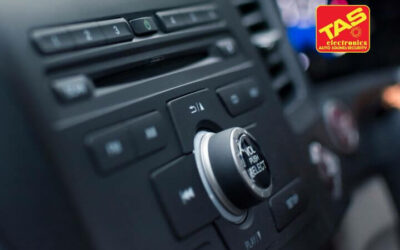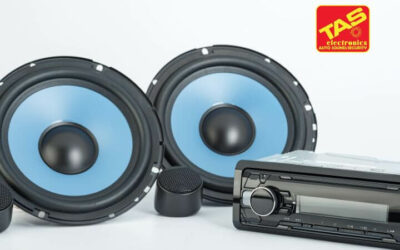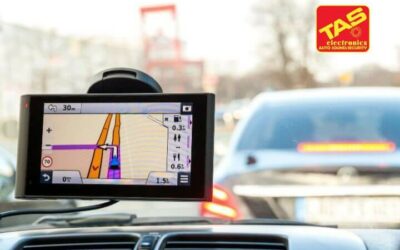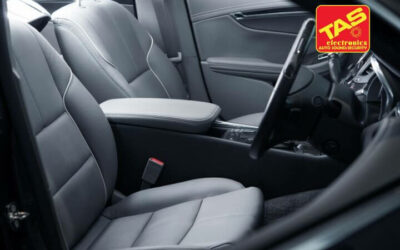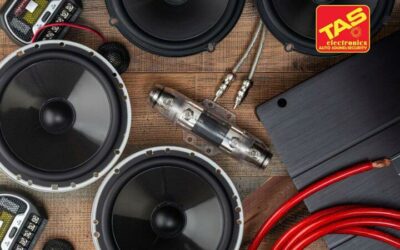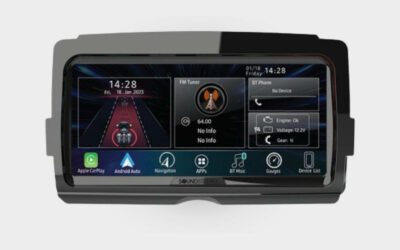Whether you’re an audiophile who wants the ultimate sound system or just someone who wants to hear your music clearly over the road noise, upgrading your car’s factory stereo with an aftermarket amplifier can make a huge difference. TAS Electronics, experts in Car Audio, stand as testament to the profound impact a high-quality amplifier can have on your listening experience on the road. This guide will cover everything you need to know about what amplifiers do, how to choose the right one, installation tips, and how amps can take your car audio to the next level. Let’s get amplified!
Introduction
A car amplifier is a device that boosts the low voltage audio signal from your car’s stereo so it’s strong enough to power your speakers properly. It provides the extra juice needed to give you louder, cleaner sound with expanded range. The tiny built-in amplifiers in factory systems are limited in power, often distorting at high volumes. Adding an amplifier overcomes these limitations.
In this guide, we’ll look at:
- Benefits of adding an amplifier
- How amps provide extra power and clarity
- Key factors in choosing the right amplifier
- Installing amplifiers safely and effectively
- Troubleshooting common amplifier problems
- Improving audio quality with the right amplifier
So whether you just want more volume or a complete audio overhaul, amplifiers are a key upgrade. Let’s break it all down.
Why Amplifiers Are Needed
The stereo systems that come standard in most cars are fairly underpowered. The head unit contains a small integrated amplifier mainly designed to conserve space and cost.
While these factory systems can play music at moderate volumes decently, push them too hard and distortion quickly sets in. Turn the bass too high or drive at highway speeds and the weak amplifier distorts because it lacks sufficient power.
An aftermarket amplifier provides a major boost in power output. This allows your speakers to play louder and cleaner, even at high volumes.
Benefits of adding an amplifier:
- Overcomes road noise – More power cuts through noise
- Expands frequency range – Crisp highs and deep bass
- Increased clarity – Distortion free even at high volumes
- Customization – Fine tune sound with amp controls
The extra power and flexibility an amplifier provides is the best way to get truly impressive, customizable sound from your car audio system.
How Amplifiers Work
Amplifiers take the low level signal from your stereo’s preamp outputs and use electrical components to boost it to a higher voltage that can sufficiently drive your speakers.
Here’s what’s happening inside:
- A power supply converts the car’s 12V DC to AC current
- The input preamp processes the signal
- Transistors or other components amplify the signal
- An output filter removes noise and prepares transmission
- Heat sinks and cooling systems dissipate heat from high power operation
This boosted signal is what allows your speakers to reproduce the full range of sound at higher volumes with reduced distortion. The amplifier also provides controls like gain and crossover settings that let you customize the signal for optimized sound.
Amplifier Classes and Technologies
There are different classes of amplifier operation, which utilize different internal component configurations to affect the amplifier’s efficiency, heat output, and sound quality.
Some key classes:
- Class A – Inefficient but excellent sound quality
- Class AB – Balances good efficiency and sound
- Class D – Highly efficient with compact size but can affect clarity
Digital amplifiers use modern digital signal processing for excellent precision and control. However, some people still prefer the smooth “analog” sound of traditional Class AB amplifiers.
Consider the type of amplifier class used, as well as your sound quality needs, when choosing an amplifier. Efficiency vs fidelity tradeoffs exist.
Choosing an Amplifier
With so many options out there, how do you choose the right amplifier your system? Here are the key factors to consider:
- RMS power – Better than “peak” ratings for real output
- Number of channels – Match to speakers, 2, 4, mono, etc.
- Headroom – Power above your needs prevents clipping
- Signal processing – Crossovers, EQ, bass boost, etc.
- Size/footprint – Ensure it fits your vehicle
- Impedance compatibility – Work with your speakers’ ohms
- Budget – Prices range widely based on power and features
Getting an amplifier appropriately matched to your current speakers and stereo will provide the best results. Don’t choose more power than you realistically need.
Installing Amplifiers
While it is possible to install a car amplifier yourself, it’s best left to experienced professionals. Amplifiers require significant electrical power and introduce safety risks if wiring is incorrect.
Key installation steps:
- Mount the amplifier securely, often in the trunk
- Run power wiring from the battery using proper gauge wire
- Connect to speaker wires or RCA outputs from stereo
- Ensure proper grounding with vehicle chassis
- Add fusing for overload protection
- Adjust gain and crossover settings
- Confirm safe operation
Take the time to properly install your amplifier to maximize performance and safety. Don’t cut corners.
Troubleshooting Amplifier Problems
Some common amplifier issues to be aware of:
- Distortion – Usually a sign of clipping from underpowering
- Turn off/protect mode – Triggered by shorts, overheating, etc.
- Noise/whine – Issues with wiring, grounding or components
- No sound – Start diagnosis at connections and work backward
Determining if an issue originates from the amplifier vs. another component takes some investigation:
- Isolate components – Does problem persist when amp removed?
- Check wiring – Fraying, shorts, loose connections
- Verify settings – Gain, crossover configured correctly?
- Try a different speaker – Speaker might be faulty
Be methodical when troubleshooting amplifier problems. The issue isn’t always the amp itself.
Benefits of Adding an Amplifier
Beyond just getting louder sound, amplifiers improve your overall listening experience:
- Cleaner, distortion-free sound at any volume
- Hear nuances in music previously lost
- Feel the beat with expanded bass
- Overpower road noise for clear sound
- Customize your sound with amplifier settings
- Protect speakers from damage via clipping
Upgrading your car’s audio with an amplifier enables you to truly experience your music the way it was meant to sound.
FAQs
How do I match an amplifier to my factory stereo?
Look at amplifier power in relation to your speaker’s RMS ratings. Provide around 50-75% more power than your speakers are rated for optimal headroom.
What wiring gauge should be used to install an amp?
Use thicker wire for higher power amps – 12-16 gauge for under 500W, 8-10 gauge up to 1000W, 4 gauge over 1000W.
Can I install an amp myself or do I need a pro?
It’s highly advisable to have a professional installer handle wiring your amplifier due to hazards.
How many channels do I need for a basic upgrade?
Look at your existing speaker channels – typically 4 channels will give a nice boost for non-subwoofer systems.
What are signs my factory amp is underpowered?
Distortion at high volumes, weak bass output, lack of clarity, and speakers sounding strained.
Will an amp drain my car battery?
With proper wiring an amplifier won’t drain your battery when the car is off. Install a capacitor if concerned.
What amp features help with sound quality?
Crossovers, parametric EQ, bass boost circuits, and balanced preamp inputs help tune sound.
Conclusion
Adding an aftermarket amplifier supercharges your car audio system, allowing you to overpower road noise for crisp, distortion-free sound at any volume.
Choose an amp appropriate for your speakers, budget and listening preferences. Proper installation and integration is key, so consider having a professional handle wiring of your new amplifier.
Once powered up, you’ll immediately notice the expanded dynamics and clarity an amplifier provides. So turbocharge your car’s factory sound system with the power and capabilities that only an amplifier can deliver!
References
- Crutchfield – Car Amplifier Buying Guide
- Lifewire – How Car Amplifiers Work
- Rockford Fosgate – What Does a Car Amplifier Do?


